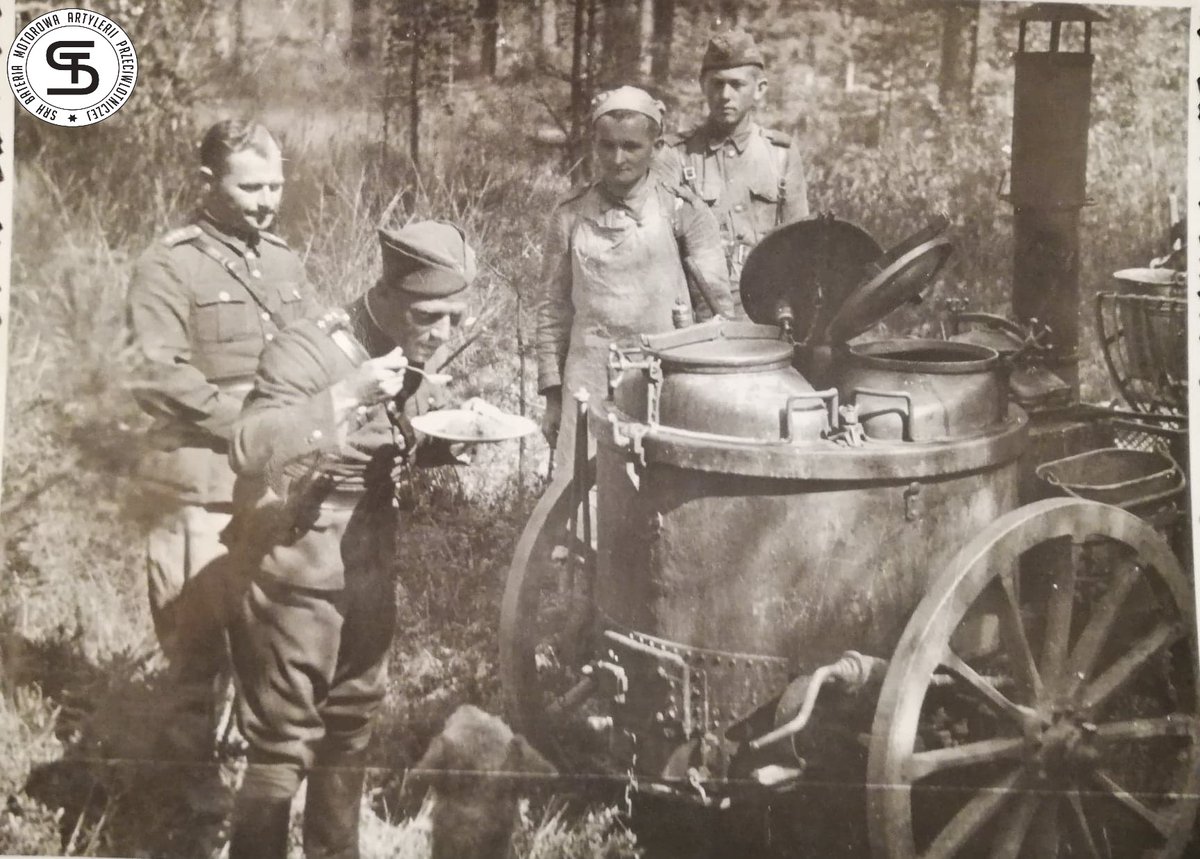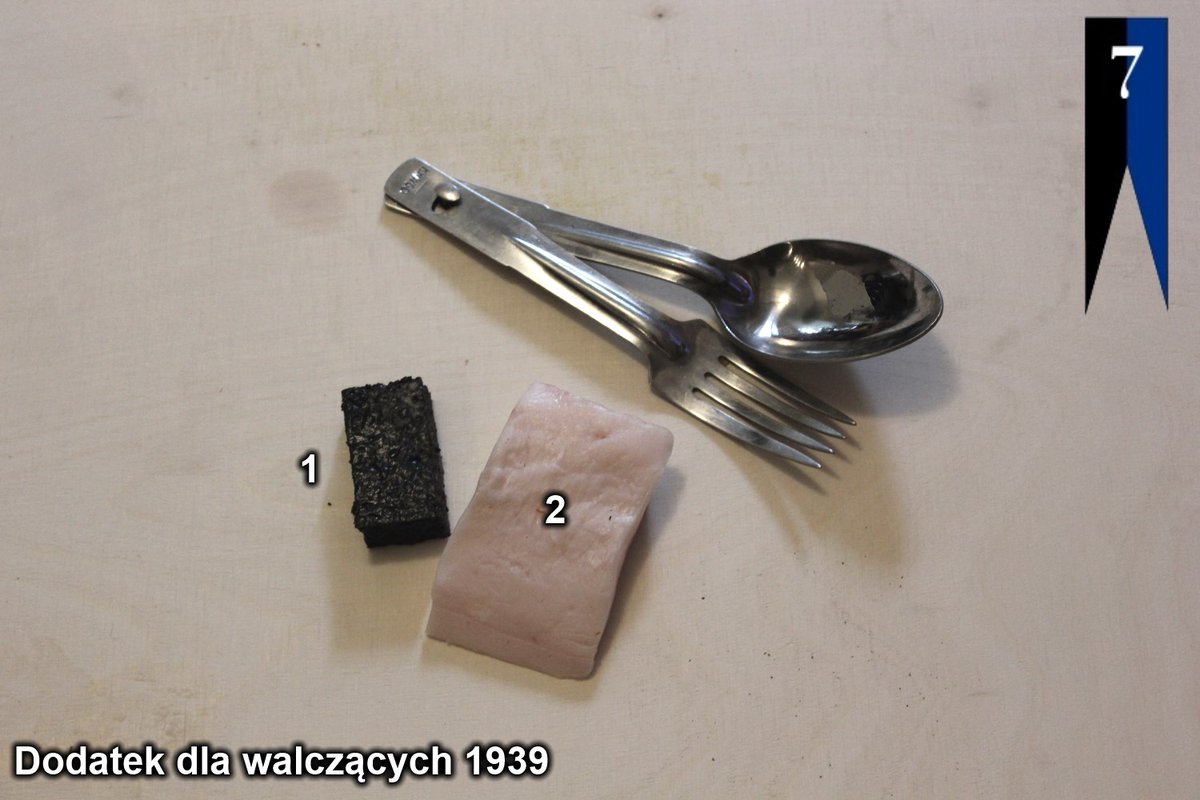
CALORICITY OF POLISH SOLIDERS RATIONS 1939
#1939 #polisharmy #secondwar #WW2
When comparing the statistical data on food in the army as well as in the countryside and in cities, it should be emphasized that the Polish army cared very much for the level of soliders’ food. 1/
#1939 #polisharmy #secondwar #WW2
When comparing the statistical data on food in the army as well as in the countryside and in cities, it should be emphasized that the Polish army cared very much for the level of soliders’ food. 1/

The diet of an average Polish citizen of the 1930s, which was a poor country, was based mainly on flour and potato dishes. The diet did not contain enough foods high in protein, fat and sugar. The average annual consumption of meat by in city was approx. 45 kg, and in the 2/ 

countryside only 8.5-9 kg per person.
At the same time, in the armed forces, during the year of service, a soldier ate 90-110 kg of meat, which is more than twice as much as a city dweller and eleven times more than a farmer. The consumption of other important food products, 3/
At the same time, in the armed forces, during the year of service, a soldier ate 90-110 kg of meat, which is more than twice as much as a city dweller and eleven times more than a farmer. The consumption of other important food products, 3/

e.g. fats, also showed huge disproportions - a soldier consumed 8.7 kg of fats a year, a farmer consumed 2.8 kg respectively.
The calorific value of Polish military rations in 1939 was as follows:
- peace ration "N" - 3488 kcal
- war ration "W" - 3651 kcal
4/
The calorific value of Polish military rations in 1939 was as follows:
- peace ration "N" - 3488 kcal
- war ration "W" - 3651 kcal
4/

- war dry ration "S" - 3650 kcal
- war iron ration "R" - 1539 kcal
- Allowance for first line soliders - 259 kcal
The scale of the disproportion in calorific value of food rations between a peasant serving in the army and earning his living as a farmer was clearly 5/
- war iron ration "R" - 1539 kcal
- Allowance for first line soliders - 259 kcal
The scale of the disproportion in calorific value of food rations between a peasant serving in the army and earning his living as a farmer was clearly 5/

demonstrated by the research carried out in 1936-1938. The daily ration in the countryside usually did not exceed 1800-2000 kcal, in order to drop even to the level of 1350 kcal in the pre-harvest season. Inadequate nutrition in the countryside and poor hygiene resulted in the 6/ 

rejection of 22% of rural conscripts. Therefore, it was necessary to provide the conscripts with adequate nutrition during the entire, over 2-year-long service.
The normal daily allowance for the Polish Army contained an average of 3560 kcal, which was considered the minimum 7/
The normal daily allowance for the Polish Army contained an average of 3560 kcal, which was considered the minimum 7/

level. The Polish food ration did not differ from the standards in the armies of much more economically developed countries such as France (3588), England (ca 3000), Italy (3121), the USSR (3696), Romania (ca 3900-4000). The German ration at the time of the invasion of Poland 8/ 

was between 3600 - 4000 kcal. It is necessary to note here that the best opinion in terms of military nutrition was undoubtedly enjoyed by the US Army, whose basic food ration was much more varied than its European counterparts in the 30-ties. 9/ 

• • •
Missing some Tweet in this thread? You can try to
force a refresh






















